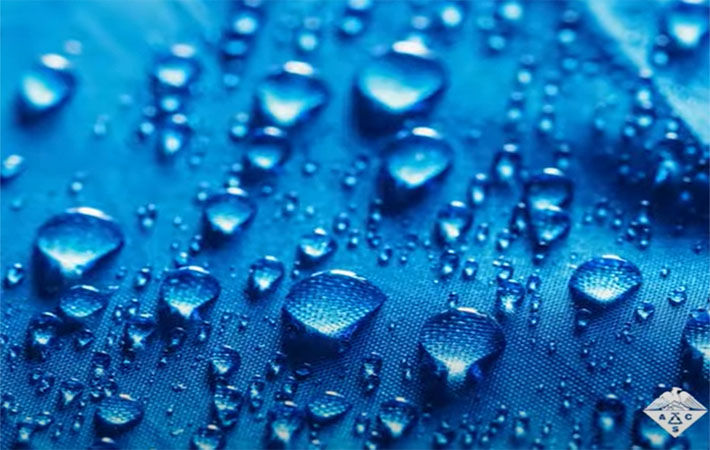Scientists at Wuhan University of Technology have developed a one-step method to make cotton impermeable to water and oil. The material stays afloat with up to 35 times its weight because of air pockets. These features make this material suitable to make life jackets and swimsuits. Methods currently used to make cotton fluid repellent are time-consuming.
The research is reported in ACS Applied Materials & Interfaces.Scientists at Wuhan University of Technology have developed a one-step method to make cotton impermeable to water and oil. The material stays afloat with up to 35 times its weight because of air pockets. These features make this material suitable to make life jackets and swimsuits. Methods currently used to make cotton fluid repellent are time-consuming.#
Waterproof and oil-proof fabrics are in high demand for recreational water activities because of their low drag and self-cleaning properties. While cotton is a popular fabric, it’s hydrophilic, so most liquids and dirt can easily mess it up. To improve cotton’s impermeability, previous researchers developed superamphiphobic coatings that were extremely water- and oil-repellant. But because they required multiple time-consuming steps to apply, these coatings were impractical for large-scale manufacturing. Others incorporated nanoparticles into their formulas, but there are concerns about these particles sloughing off and potentially harming the environment.
Xiao Gong and Xinting Han, from the State Key Laboratory of Silicate Materials for Architectures, Wuhan University of Technology, wanted to develop a simple way to make a coating for cotton fabric so it would have superb liquid-repulsion properties and hold up in many challenging circumstances.
The researchers optimised a one-step process for a liquid-proof coating by mixing dopamine hydrochloride, 3-aminopropyltriethoxysilane and 1H,1H,2H,2H-perfluorodecyltriethoxysilane with a piece of cotton fabric for 24 hours. The three-part solution developed into a uniform, dark brown coating on the fabric. In tests, the treated cotton was impervious to many common liquids. The new solution also coated inner cotton fibres, making them liquid proof, too. In other tests, only strong acid and repeated washings reduced the material’s water and oil resistance, respectively. Treated fabric soiled with fine sand was easy to clean with water, whereas water only wetted the control version. Finally, the material stayed afloat with up to 35 times its weight on it because of nanoscale air pockets that formed where the coating attached to the fabric, the researchers explain. They say their durable cotton fabric has great potential for applications where drag reduction and increased buoyancy are important, including swimsuits and life jackets.
The work was funded from the National Natural Science Foundation of China and the Opening Project of State Key Laboratory of Polymer Materials Engineering, Sichuan University.
Fibre2Fashion News Desk (SV)


